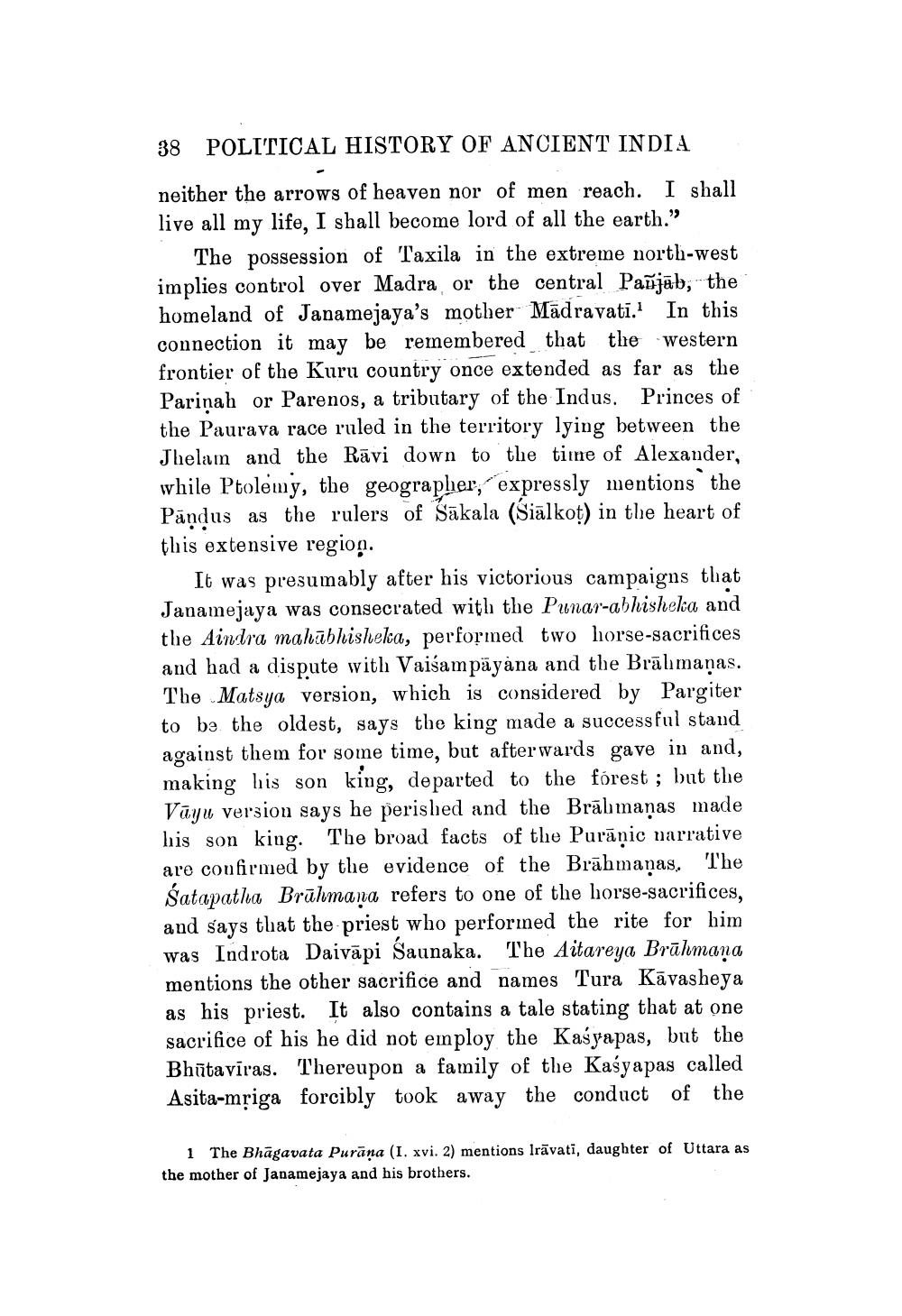________________
38 POLITICAL HISTORY OF ANCIENT INDIA
neither the arrows of heaven nor of men reach. I shall live all my life, I shall become lord of all the earth."
The possession of Taxila in the extreme north-west implies control over Madra or the central Panjab, the homeland of Janamejaya's mother Madravati.1 In this connection it may be remembered that the western frontier of the Kuru country once extended as far as the Parinah or Parenos, a tributary of the Indus. Princes of the Paurava race ruled in the territory lying between the Jhelam and the Ravi down to the time of Alexander, while Ptolemy, the geographer, expressly mentions the Pandus as the rulers of Sakala (Sialkot) in the heart of this extensive region.
It was presumably after his victorious campaigns that Janamejaya was consecrated with the Punar-abhisheka and the Aindra mahabhisheka, performed two horse-sacrifices and had a dispute with Vaisampayana and the Brahmaņas. The Matsya version, which is considered by Pargiter to be the oldest, says the king made a successful stand against them for some time, but afterwards gave in and, making his son king, departed to the forest; but the Vayu version says he perished and the Brahmaņas made his son king. The broad facts of the Puranic narrative are confirmed by the evidence of the Brahmanas. The Satapatha Brahmana refers to one of the horse-sacrifices, and says that the priest who performed the rite for him was Indrota Daivapi Saunaka. The Aitareya Brahmana mentions the other sacrifice and names Tura Kāvasheya as his priest. It also contains a tale stating that at one sacrifice of his he did not employ the Kasyapas, but the Bhutaviras. Thereupon a family of the Kasyapas called Asita-mriga forcibly took away the conduct of the
1 The Bhagavata Purana (I. xvi. 2) mentions Iravati, daughter of Uttara as the mother of Janamejaya and his brothers.




